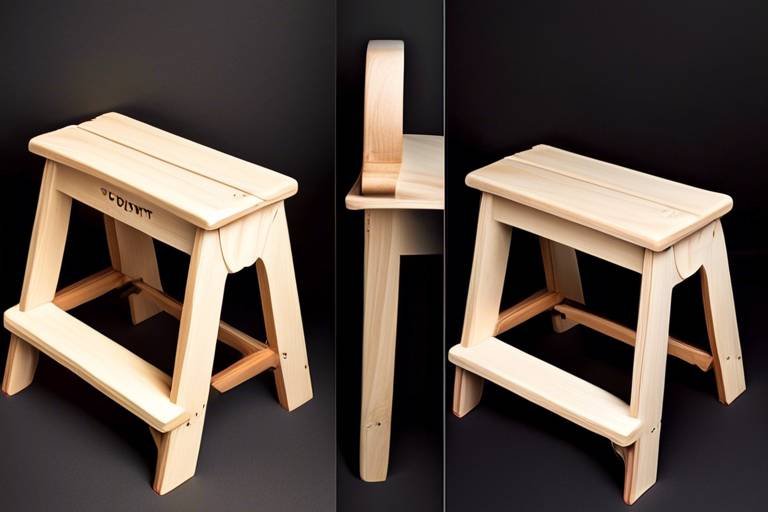Wood Burning: Creating Art with Pyrography
Have you ever looked at a piece of wood and imagined it transformed into a stunning work of art? Welcome to the captivating world of pyrography, where creativity meets craftsmanship through the art of wood burning. This unique technique allows artists to etch intricate designs onto wood surfaces using heat, turning ordinary pieces of lumber into extraordinary masterpieces. Whether you're a seasoned artist or a curious beginner, pyrography offers a fascinating avenue for self-expression and creativity.
At its core, pyrography is not just about burning wood; it's about telling a story through your designs. Imagine the crackle of the wood as your pyrography pen glides over its surface, creating a dance of light and shadow. Each stroke can evoke emotions, capture memories, or simply showcase the beauty of nature. The versatility of pyrography means you can create anything from detailed portraits to whimsical patterns, making it an art form that truly caters to individual tastes and styles.
What makes pyrography even more intriguing is its accessibility. You don't need to be a professional artist to start; all you need is a passion for creativity and a willingness to learn. With just a few essential tools and techniques, anyone can embark on this artistic journey. Plus, the satisfaction that comes from transforming a plain piece of wood into a stunning work of art is unmatched. So, grab your tools, and let's dive into the world of pyrography!
Delve into the origins of pyrography, tracing its evolution from ancient practices to modern artistic expressions. Learn how different cultures have embraced this technique throughout history.
Explore the various tools needed for pyrography, including pens, tips, and wood types. Understanding the right equipment is crucial for achieving stunning results in your wood-burning projects.
The type of wood significantly impacts the outcome of pyrographic art. Discover the best wood choices, their characteristics, and how to prepare them for burning.
Learn fundamental pyrography techniques that every beginner should master. From simple lines to shading, these skills will lay the foundation for more complex designs.
Once you’ve grasped the basics, explore advanced techniques that allow for intricate designs and textures. These methods will elevate your wood-burning artwork to new heights.
Finding inspiration is key to creating unique pyrographic art. Discover sources of design ideas, including nature, patterns, and cultural motifs that can spark your creativity.
Safety is paramount when engaging in pyrography. Learn essential safety measures to protect yourself and your workspace while enjoying this captivating art form.
Once your artwork is complete, proper display and preservation are important. Explore methods to showcase your creations while ensuring they remain in excellent condition for years to come.
- What is pyrography? Pyrography is the art of decorating wood or other materials with burn marks, creating intricate designs and patterns.
- Do I need special skills to start pyrography? No, anyone can start with basic techniques. With practice, you can improve your skills over time.
- What type of wood is best for pyrography? Softwoods like pine and basswood are popular choices for beginners due to their ease of burning.
- Is pyrography safe? Yes, but it’s important to follow safety guidelines, such as working in a well-ventilated area and using protective gear.

History of Pyrography
Pyrography, often referred to as "wood burning," has a rich and intriguing history that stretches back thousands of years. This ancient art form, which involves using a heated tool to create designs on wood, has been embraced by various cultures around the globe. The roots of pyrography can be traced to ancient civilizations, where it was not only a form of artistic expression but also a practical skill used for decorating everyday items.
The earliest known examples of pyrography date back to around 1200 B.C. in China, where artisans used heated metal tools to burn designs into wood. This technique was not limited to wood; it also extended to other materials such as leather and bone. As time progressed, different cultures adopted this craft, each adding their unique flair and techniques. For instance, in ancient Egypt, pyrography was used to embellish wooden furniture and ceremonial objects, showcasing intricate designs that reflected their rich culture.
In Africa, pyrography took on a more functional role. Craftsmen used it to create decorative patterns on everyday items, such as utensils and masks, often incorporating symbols that held cultural significance. The indigenous peoples of North America also utilized pyrography, creating beautiful designs on wooden tools and ceremonial objects. These artistic expressions were not merely for aesthetic purposes; they often told stories or conveyed important messages about the community's beliefs and values.
As we moved into the 19th century, pyrography began to gain popularity in Europe and America. The introduction of electric pyrography tools in the late 1800s revolutionized the craft, making it more accessible to hobbyists and artists alike. This era saw the emergence of pyrographic art as a recognized form of artistic expression, with artists experimenting with various techniques and styles. The Victorian era, in particular, saw a surge in interest for pyrography, leading to the creation of elaborate pieces that adorned homes and public spaces.
Today, pyrography has evolved into a respected art form, with artists pushing the boundaries of creativity. Modern pyrographers utilize a range of materials, including different types of wood, leather, and even paper, to create stunning artworks. The techniques have also expanded, incorporating elements such as shading and texturing, allowing for more intricate designs. With the rise of social media, the art of pyrography has found a new platform for sharing and inspiring others, creating a vibrant community of artists worldwide.
In conclusion, the history of pyrography is a testament to the enduring appeal of this art form. From its ancient origins to its modern-day manifestations, pyrography continues to captivate and inspire, allowing artists to express their creativity in unique and meaningful ways. Whether you are a seasoned artist or a curious beginner, delving into the world of wood burning opens up a realm of possibilities for artistic exploration.
- What is pyrography? Pyrography is the art of decorating wood or other materials by burning designs into their surface using a heated tool.
- What tools do I need to start pyrography? Essential tools include a pyrography pen, various tips for different effects, and suitable wood for burning.
- Can I use any type of wood for pyrography? While many types of wood can be used, softer woods like basswood or birch are often preferred for their ease of burning and fine detail.
- Is pyrography safe? Yes, but it is important to follow safety guidelines, such as working in a well-ventilated area and using protective gear.
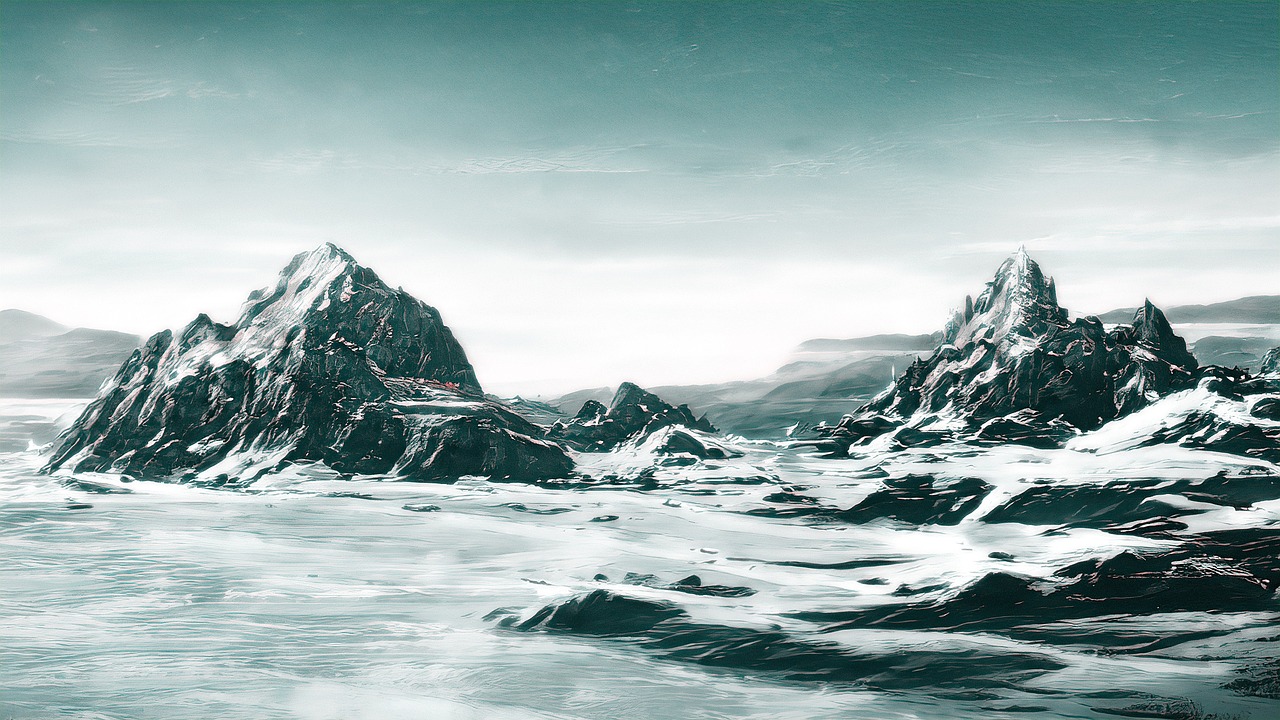
Essential Tools for Pyrography
When it comes to pyrography, having the right tools is essential for creating stunning pieces of art. Think of it like cooking; you wouldn’t want to whip up a gourmet meal without a good set of knives, right? In the same way, the tools you choose can make or break your wood-burning experience. So, let's dive into the must-have tools that will help you ignite your creativity and bring your designs to life!
First and foremost, you'll need a reliable pyrography pen. This is your primary tool, and it comes in various styles, including fixed temperature and variable temperature pens. The variable temperature pens are particularly popular among artists because they allow for more control over the burning process, giving you the flexibility to create different effects. Imagine having a paintbrush that can change its thickness and texture with just a twist; that’s what a variable temperature pen offers!
Next up are the tips for your pyrography pen. These tips come in various shapes and sizes, each designed for specific techniques. For example, a fine point tip is perfect for detailed line work, while a shading tip can help you create depth and texture in your artwork. It’s like having a toolbox filled with different brushes for painting; each one serves a unique purpose. Investing in a variety of tips will expand your creative possibilities immensely!
Now, let’s talk about the wood itself. The type of wood you choose can significantly affect your results. Hardwoods like maple, birch, and cherry are excellent choices because they burn evenly and allow for intricate designs. On the other hand, softwoods like pine can burn too quickly and may not provide the detail you’re looking for. It’s crucial to select wood that suits your project and personal style. Additionally, make sure to sand your wood surface before starting; a smooth surface will yield cleaner lines and a more polished final piece.
Another essential tool is a work surface. A sturdy, heat-resistant surface will not only protect your workspace but also provide stability while you work. Some artists prefer using a dedicated workbench, while others might opt for a portable mat. Whatever you choose, make sure it can withstand the heat generated by your pyrography pen.
Lastly, don’t forget about safety equipment. While pyrography is a fun and rewarding hobby, it does come with its risks. A good pair of heat-resistant gloves and a mask to protect against fumes are vital. Think of these items as your armor in the world of wood burning; they’ll keep you safe while you unleash your creativity!
In summary, here’s a quick overview of the essential tools you’ll need for pyrography:
| Tool | Description |
|---|---|
| Pyrography Pen | Choose between fixed or variable temperature pens for better control. |
| Tips | Various shapes for different techniques like shading and fine lines. |
| Wood | Hardwoods like maple or birch are best for detailed work. |
| Work Surface | A heat-resistant area to protect your workspace. |
| Safety Equipment | Heat-resistant gloves and masks to ensure safety. |
With these tools in hand, you’re well on your way to creating beautiful pyrographic art. Remember, each tool plays a role in your creative process, so choose wisely and enjoy the journey of wood burning!
- What is the best wood for beginners? - Softwoods like pine are easier to work with, but they may not give the best results. Hardwoods like birch or maple are recommended for more detailed work.
- Do I need a specific type of pen for pyrography? - A variable temperature pen is recommended for beginners as it allows for more control over the burning process.
- How do I clean my pyrography tools? - Regularly clean the tips with a damp cloth and avoid using abrasive materials that could damage them.
- Is pyrography safe? - As long as you take proper safety precautions, such as using gloves and masks, pyrography can be a safe and enjoyable hobby.
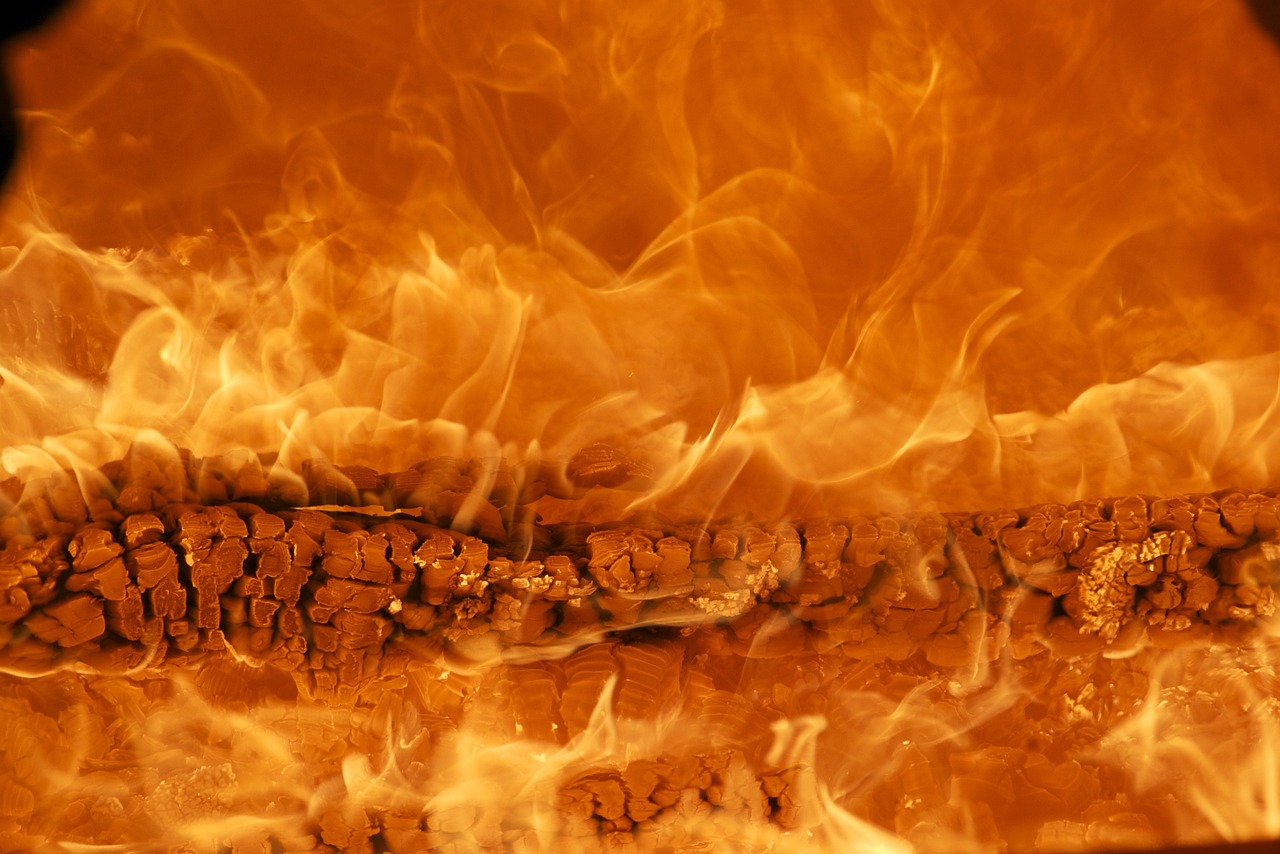
Choosing the Right Wood
When it comes to pyrography, the choice of wood can make or break your artistic endeavor. Imagine trying to paint on a canvas that doesn’t absorb color well; it would be frustrating, right? Similarly, the wood you choose plays a pivotal role in how your designs turn out. Different types of wood have varying characteristics, such as grain patterns, density, and color, all of which impact the final look of your artwork. So, let’s dive into some of the best wood options for pyrography and what makes them special.
First off, one of the most popular choices among pyrographers is basswood. This softwood is not only easy to work with but also has a fine, even grain that allows for smooth burning. Its light color provides a beautiful contrast to the dark lines created by the pyrography tool, making it ideal for beginners and seasoned artists alike. Another fantastic option is birch, which offers a slightly harder surface than basswood but still maintains a fine grain. The pale hue of birch can give your designs a refined look, perfect for intricate patterns.
On the other hand, if you're looking for something with a bit more character, consider using maple. Its dense structure means it can hold intricate details beautifully, making it a favorite for advanced pyrographers. However, be cautious; the density can also make it a bit challenging to burn into, so practice is key. Cedar is another interesting choice. It has a distinct aroma and a beautiful grain, but its softer texture can lead to uneven burns if you’re not careful. This can be a fun challenge for those looking to experiment with different effects.
To help you make an informed decision, here’s a quick comparison of some popular wood types for pyrography:
| Wood Type | Grain | Density | Best For |
|---|---|---|---|
| Basswood | Fine | Soft | Beginners, Detailed Designs |
| Birch | Fine | Medium | Intricate Patterns |
| Maple | Fine | Hard | Advanced Techniques |
| Cedar | Distinct | Soft | Unique Effects |
It’s also crucial to prepare the wood properly before you start burning. Sanding the surface to a smooth finish will help you achieve cleaner lines and better shading. Additionally, consider applying a light coat of mineral oil or wood conditioner to enhance the wood’s natural beauty and protect it from damage. Remember, the right preparation can elevate your artwork to a whole new level!
In conclusion, choosing the right wood for pyrography is not just about picking something that looks good; it’s about understanding how each type will react to your burning techniques. Whether you’re a beginner looking to create simple designs or an advanced artist aiming for intricate details, the wood you choose will significantly affect your results. So, take your time, experiment with different types, and let your creativity flow!
- What is the best wood for beginners in pyrography? Basswood is highly recommended for beginners due to its softness and fine grain.
- Can I use reclaimed wood for pyrography? Yes, reclaimed wood can add a unique character to your projects, but make sure it’s clean and free of contaminants.
- How do I prepare wood for pyrography? Sand the surface to a smooth finish and consider applying a light coat of mineral oil to protect the wood.
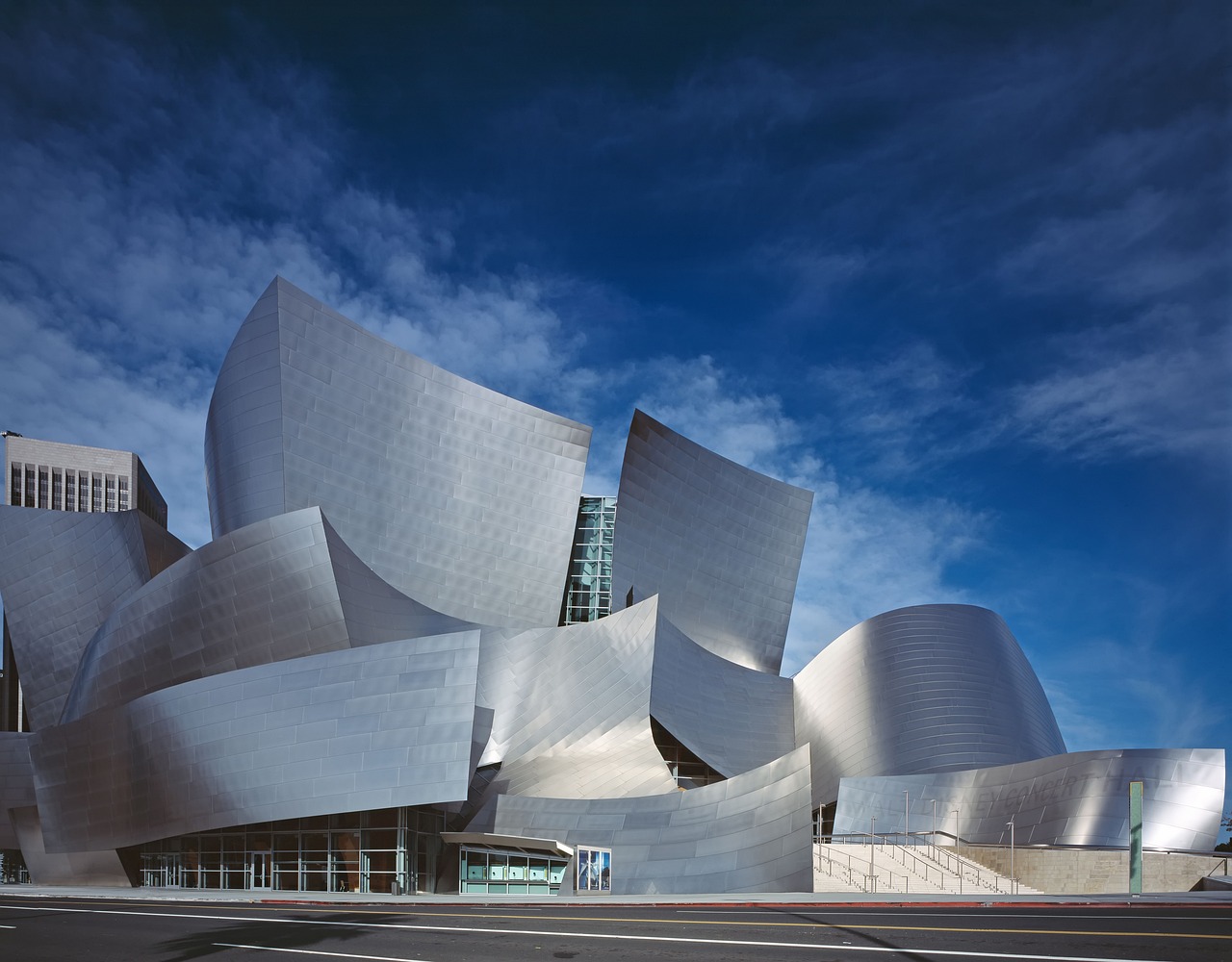
Basic Techniques for Beginners
Starting your journey into the mesmerizing world of pyrography can be both thrilling and daunting. Fear not, as every artist was once a beginner! The key to mastering this art lies in understanding and practicing some fundamental techniques that will set the stage for your creative explosion. First and foremost, you'll want to get comfortable with your pyrography pen. This tool is your magic wand, and mastering its control is essential. Begin with the basic stroke, which involves drawing simple lines across the wood. Practice varying your pressure to see how it affects the depth and darkness of your lines. The beauty of pyrography is that the more you practice, the more confident you become.
Next, let’s dive into shading. This technique is crucial for adding dimension and depth to your designs. To achieve effective shading, you can use a technique called cross-hatching, where you layer lines in different directions. Start with light pressure and gradually increase it to create a gradient effect. Remember, shading can transform a flat image into a captivating piece of art, so don’t shy away from experimenting with different styles.
Another essential technique is the dot method. This involves creating patterns using small dots instead of lines. It’s a great way to fill in areas and add texture to your art. You can create stunning effects by varying the size and spacing of your dots. For instance, closely spaced dots can create a darker area, while more widely spaced dots can give a lighter appearance. This technique is not only fun but also allows for a lot of creativity.
As you practice, consider keeping a practice board handy. This can be a piece of scrap wood where you can try out different techniques without the fear of ruining your main project. It’s a fantastic way to experiment with different speeds, pressures, and patterns until you find what feels right for you. Remember, pyrography is an art form that thrives on experimentation!
To further enhance your skills, you might want to explore the use of templates. These can serve as guides for your designs, especially when you’re still getting the hang of freehand drawing. You can find templates online or even create your own. Simply print out your desired design, trace it onto the wood, and then use your pyrography pen to follow the lines. This method can help you gain confidence in your ability to create intricate designs.
Ultimately, the most important tip is to enjoy the process! Pyrography is about expressing yourself and having fun with your creativity. Don’t worry about making mistakes; instead, view them as opportunities to learn and improve. As you develop your skills, you’ll find your unique style emerging, and that’s when the magic truly happens.
Q1: Do I need special wood for pyrography?
A1: While you can use various types of wood, softer woods like pine or basswood are ideal for beginners as they burn easily and produce clean lines.
Q2: How do I clean my pyrography pen?
A2: It's essential to keep your pen clean. You can use a damp cloth to wipe off any residue while it's cool. For stubborn spots, a little rubbing alcohol can help.
Q3: Can I use stencils for my designs?
A3: Absolutely! Stencils can be a great way to start, especially if you’re feeling unsure about freehand drawing.
Q4: What safety precautions should I take?
A4: Always work in a well-ventilated area and wear a mask if you're sensitive to smoke. Keep a fire extinguisher nearby just in case, and never leave your hot pen unattended.
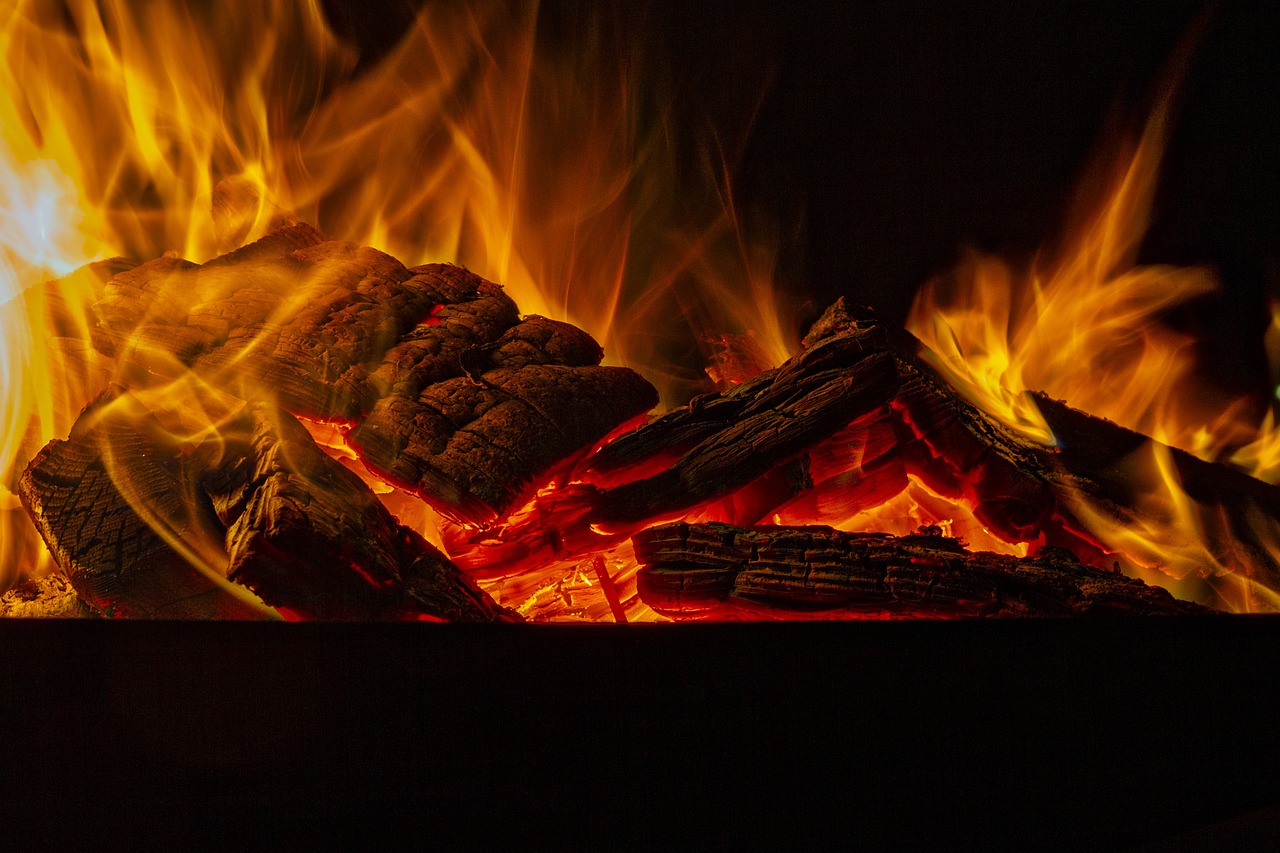
Advanced Pyrography Techniques
Once you've mastered the basics of pyrography, it's time to elevate your skills and delve into advanced techniques that can transform your wood-burning art into something truly spectacular. These methods not only enhance the visual appeal of your work but also allow for greater creativity and expression. One of the most exciting aspects of advanced pyrography is the ability to create intricate designs and textures that can bring your artwork to life.
A popular advanced technique is shading. This involves varying the pressure and speed of your pyrography pen to create depth and dimension. By using different shading techniques, such as cross-hatching or stippling, you can add a realistic touch to your designs. For instance, imagine a beautiful landscape where the trees have a soft, shaded effect, giving the illusion of sunlight filtering through the leaves. To master shading, practice on scrap wood, experimenting with different pressures and speeds until you achieve the desired effect.
Another technique to explore is texturing. This can be achieved by using various pen tips and adjusting your technique. For example, a wire tip can create fine lines, while a flat tip can produce broader strokes. Combining these different tips can lead to stunning textures that mimic natural elements, such as bark or fur. Consider the following table for a quick overview of common tips and their uses in texturing:
| Tip Type | Texture Effect |
|---|---|
| Wire Tip | Fine lines and details |
| Flat Tip | Broad strokes and shading |
| Ball Tip | Round, soft textures |
| Knife Tip | Sharp, defined edges |
In addition to shading and texturing, consider incorporating layering into your pyrography projects. Layering involves building up your design in stages, allowing for greater control over the final look. Start with a light outline of your design, then gradually add layers of shading and texture. This technique can create a sense of depth that draws the viewer into your artwork. Think of it like painting; each layer adds richness and complexity to your piece.
Don't forget about color! While pyrography traditionally focuses on the natural wood tones, adding color can dramatically enhance your work. Use colored pencils or stains to complement your burned designs. Imagine a vibrant floral pattern where the flowers pop against the natural wood grain; this contrast can create a striking visual impact. Just remember to apply color after the burning process to ensure the integrity of your artwork.
Lastly, embrace the freedom of creativity that advanced pyrography techniques offer. Experiment with mixed media by combining pyrography with other art forms, such as painting or collage. This fusion can lead to unique and innovative pieces that stand out. The beauty of pyrography lies in its versatility, so don't be afraid to push the boundaries and let your imagination run wild.
In conclusion, mastering advanced pyrography techniques can open up a world of possibilities in your wood-burning art. By incorporating shading, texturing, layering, color, and mixed media, you can create captivating pieces that reflect your unique style and vision. So grab your tools, ignite your creativity, and let the art of pyrography take you on an exciting journey!
Q: What is the best wood for advanced pyrography techniques?
A: Basswood and birch are excellent choices as they have a fine grain and are easy to burn. However, you can experiment with other types of wood for different effects.
Q: How can I create more intricate designs in my pyrography?
A: Practice is key! Start with simple designs and gradually incorporate advanced techniques like shading and texturing. Additionally, consider using stencils or tracing images to help guide your work.
Q: Is it safe to use colored pencils on pyrography?
A: Yes, but ensure that the wood is completely cooled before applying color. Always test on a scrap piece first to see how the color interacts with the burned areas.
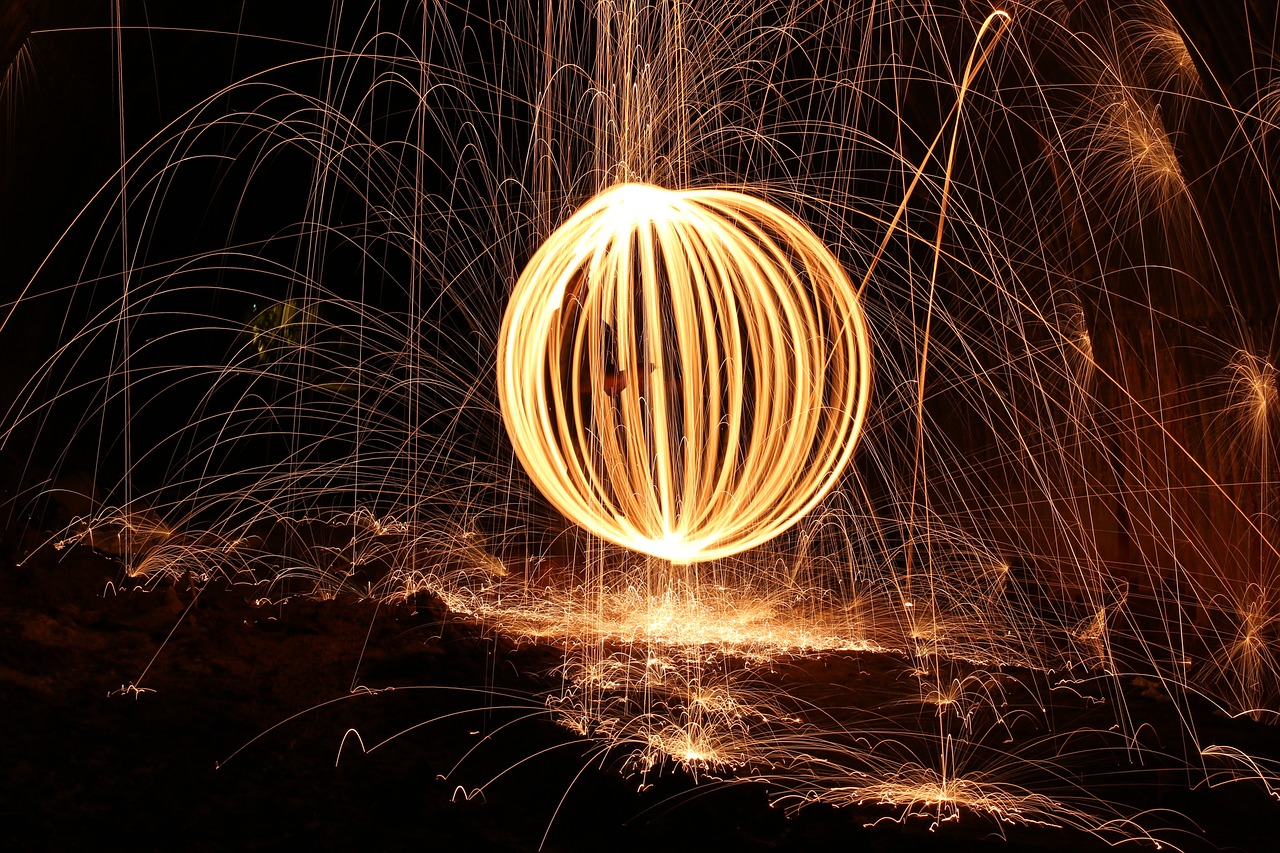
Design Inspiration for Wood Burning
When it comes to wood burning, finding the right design inspiration can be the spark that ignites your creativity. The beauty of pyrography lies in its versatility; you can draw inspiration from a myriad of sources. Nature is often the most accessible muse. Think about the intricate patterns found in leaves, the gentle curves of a river, or the majestic outlines of mountains. Each of these elements can be translated into stunning pyrographic designs that capture the essence of the natural world.
Another excellent source of inspiration is cultural motifs. Many cultures have rich traditions of art that can be incorporated into your wood-burning projects. For instance, consider the vibrant patterns of Native American art, the delicate designs of Japanese woodblock prints, or the intricate geometric patterns found in Islamic art. These designs not only add depth to your work but also tell a story, connecting your art to a broader cultural narrative.
Don't forget about personal experiences and memories as sources of inspiration. Have you ever thought about capturing a beloved pet's likeness or commemorating a cherished moment in your life? Personalizing your pyrography with these elements can make your art even more meaningful. Imagine creating a piece that not only looks beautiful but also resonates with your own journey. It’s like turning your memories into a tangible piece of art that can be cherished for generations.
For those who find it challenging to come up with original ideas, there are plenty of resources available. Websites like Pinterest and Instagram are treasure troves of creative designs. You can explore various styles, from minimalist to elaborate, and find ideas that resonate with your artistic vision. Additionally, art books and magazines often showcase talented artists and their work, serving as a source of inspiration and motivation.
Lastly, consider joining a local or online pyrography community. Engaging with fellow artists can provide a wealth of knowledge and inspiration. You can share your work, get feedback, and even collaborate on projects. Often, just seeing what others are creating can spark new ideas and push you to experiment with different techniques and styles. Remember, art is not just about the final product; it’s also about the journey of creation and the connections you make along the way.
- What are some popular themes for pyrography designs? Themes such as nature, animals, mandalas, and personal symbols are popular among artists.
- Can I use photographs as inspiration for my wood burning? Absolutely! Photographs can provide a great reference point for creating realistic designs.
- How do I ensure my design will look good on wood? It's advisable to sketch your design on paper first and then transfer it to the wood for better results.
- Where can I find more inspiration for my wood burning projects? Check out social media platforms, art galleries, and online forums dedicated to pyrography.
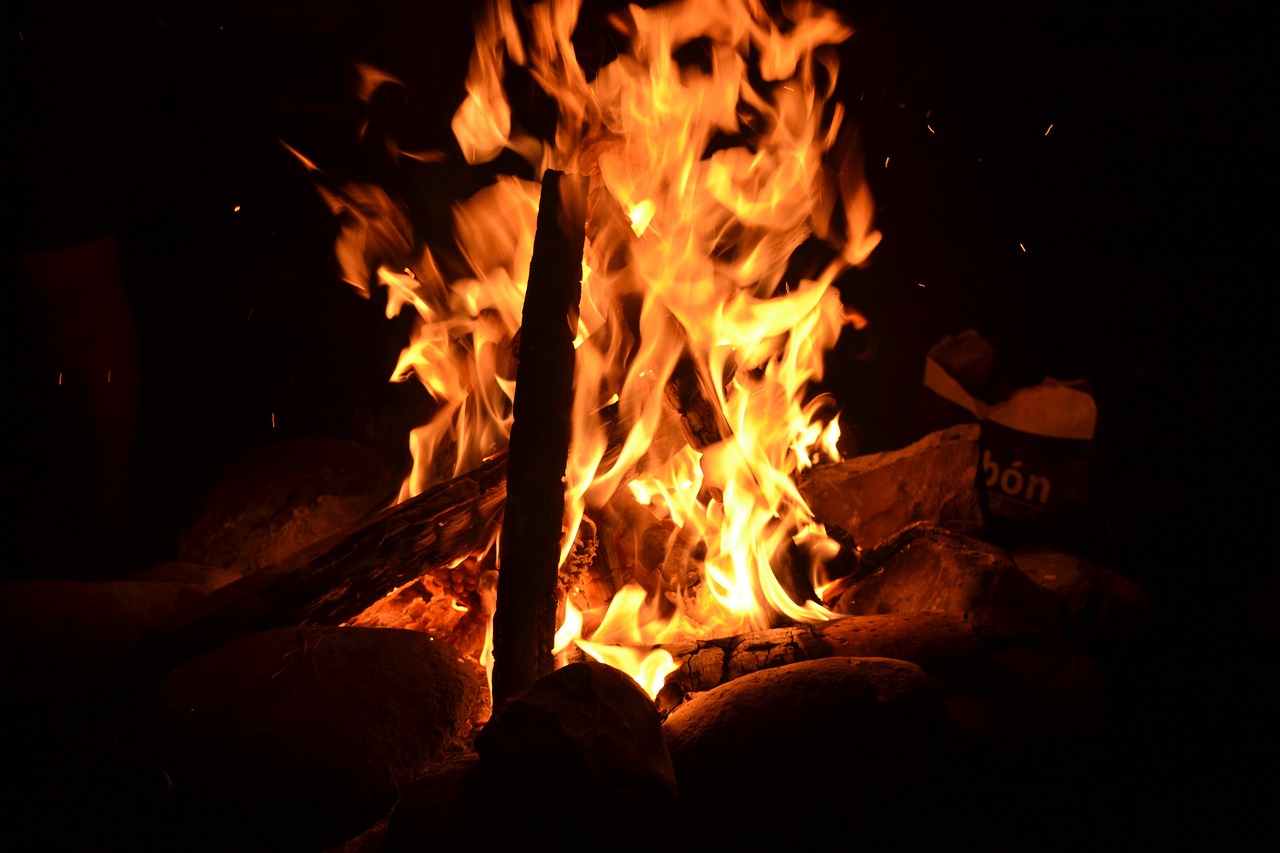
Safety Tips for Wood Burning
Engaging in pyrography can be an exhilarating experience, but it also comes with its share of risks. To ensure that your wood burning adventures remain enjoyable and safe, it’s crucial to follow some essential safety tips. First and foremost, always work in a well-ventilated area. The smoke produced during the burning process can be harmful if inhaled in large quantities. Open windows or use a fan to circulate the air and keep the workspace fresh.
Another important aspect of safety is to wear appropriate protective gear. This includes safety goggles to protect your eyes from any flying debris or splinters, as well as a dust mask to filter out any harmful particles. It’s also wise to wear heat-resistant gloves to guard against accidental burns from the pyrography tool. Remember, safety should never be an afterthought; it should be your first priority!
When it comes to your workspace, organization is key. Ensure that your working area is clutter-free and that flammable materials, such as paper, cloth, or even wood shavings, are kept at a safe distance from your burning projects. This minimizes the risk of accidental fires, which can escalate quickly. Additionally, always have a fire extinguisher or a bucket of sand nearby, just in case things get out of hand. Think of it as your safety net—better to have it and not need it than to need it and not have it!
Before you start burning, it’s also beneficial to familiarize yourself with your pyrography tool. Read the manufacturer’s instructions carefully and ensure that you understand how to operate it safely. Many tools come with different temperature settings, and understanding how to adjust these can help prevent overheating and potential accidents. When you’re finished using your tool, always unplug it and allow it to cool down completely before putting it away.
Lastly, keep in mind the importance of taking breaks. Pyrography can be a meticulous process, and it’s easy to lose track of time. However, prolonged concentration can lead to fatigue, which increases the risk of accidents. Set a timer to remind yourself to step away and stretch or hydrate. Your body and mind will thank you, and your artwork will benefit from your refreshed perspective.
By following these safety tips, you can enjoy the captivating world of wood burning while keeping yourself and your surroundings safe. Remember, safety is not just a guideline; it’s a commitment to ensuring that your creativity flourishes without unnecessary risks!
Here are some common questions that many beginners have regarding safety in pyrography:
- What should I do if I accidentally burn myself? - If you experience a burn, immediately cool the area with running water for at least 10 minutes. If the burn is severe, seek medical attention.
- Is it safe to burn treated wood? - No, treated wood can release harmful chemicals when burned. Always use untreated, natural wood for pyrography.
- How can I minimize smoke while burning? - Using a lower temperature setting can help reduce smoke. Additionally, working in a well-ventilated area is crucial.

Displaying and Preserving Pyrography Art
Once you’ve poured your heart and soul into your pyrography art, the next step is to showcase it in a way that does justice to your hard work. Displaying your creations not only allows you to share your passion with others but also enhances the beauty of your home or workspace. Think of it as dressing up your art in its finest attire! A well-displayed piece can transform a dull wall into a vibrant conversation starter.
When it comes to displaying your pyrography, consider the following options:
- Framing: A beautiful frame can elevate your artwork. Choose a frame that complements the wood and design. Natural wood frames often work wonders, enhancing the rustic charm of your pyrography.
- Hanging: If you prefer a more casual look, you can hang your pieces directly on the wall using clips or hooks. This method is perfect for showcasing multiple pieces in a gallery-style arrangement.
- Display Stands: For smaller items like coasters or ornaments, consider using display stands. These allow for easy viewing from multiple angles and can add an elegant touch to your display.
However, displaying your art is just one part of the equation; proper preservation is crucial to ensure your creations last for years to come. Pyrography art can be sensitive to environmental factors, so here are some tips to keep your artwork in pristine condition:
- Avoid Direct Sunlight: Prolonged exposure to sunlight can cause fading and discoloration. Hang your pieces in well-lit areas but out of direct sunlight.
- Humidity Control: Wood is susceptible to warping and cracking in high humidity. Keep your art in a climate-controlled environment to maintain its integrity.
- Regular Dusting: Use a soft cloth to gently dust your artwork. Avoid using harsh chemicals or cleaners, as these can damage the wood and the burned designs.
Additionally, if you’re working with items that will be handled frequently, such as serving trays or coasters, consider applying a food-safe sealant. This will protect the surface and make it easier to clean without harming the design.
Ultimately, the way you display and preserve your pyrography art reflects your personal style and respect for the craft. By taking the time to showcase your work thoughtfully and care for it properly, you not only enhance its beauty but also ensure that it can be enjoyed for generations to come.
Q: How can I clean my pyrography art without damaging it?
A: Use a soft, dry cloth to gently dust your artwork. For deeper cleaning, a slightly damp cloth can be used, but avoid any cleaners or chemicals that might harm the wood.
Q: What is the best way to frame my pyrography art?
A: Choose a frame that complements the wood and design. Natural wood frames often enhance the rustic look of your pyrography. Ensure that the frame is well-suited to the size and weight of your artwork.
Q: Can I display my pyrography art outdoors?
A: It is best to avoid outdoor display unless your artwork is specifically treated for outdoor conditions. Direct sunlight and moisture can damage the wood and design.
Q: How do I prevent my pyrography art from fading?
A: Keep your artwork out of direct sunlight and in a climate-controlled environment to prevent fading and warping.
Frequently Asked Questions
- What is pyrography?
Pyrography, often referred to as wood burning, is an art form that involves creating designs on wood or other materials by using a heated tool. The heat burns the surface to create beautiful patterns, images, and textures. It's a captivating way to express creativity and can range from simple designs to intricate artwork.
- What tools do I need to start pyrography?
To get started with pyrography, you'll need a few essential tools. The most important is a pyrography pen, which comes with various tips for different effects. You’ll also need quality wood, a pencil for sketching your designs, and sandpaper for preparing your wood surface. Optional items include stencils, a heat-resistant mat, and safety gear like gloves and a mask.
- What type of wood is best for pyrography?
Choosing the right wood is crucial for successful pyrography. Softwoods like pine, basswood, and birch are popular choices due to their fine grain and ease of burning. Avoid hardwoods that are too dense or resinous, as they can produce uneven burns and may be more challenging to work with. Always ensure the wood is well-prepared and free of knots for the best results.
- Can beginners learn pyrography?
Absolutely! Pyrography is accessible to beginners, and many start with simple designs to build their skills. There are plenty of resources available, including tutorials and workshops, that can help you learn basic techniques like shading and outlining. With practice and patience, anyone can create stunning wood-burning art!
- What safety measures should I take while wood burning?
Safety is key when engaging in pyrography. Always work in a well-ventilated area to avoid inhaling smoke. Use heat-resistant gloves to protect your hands and a mask if you're sensitive to fumes. Keep a fire extinguisher nearby and never leave your heated tools unattended. Following these precautions will ensure a safe and enjoyable experience.
- How can I display my pyrography art?
Displaying your pyrography art can be as creative as the artwork itself! You can frame your pieces, mount them on walls, or even create functional items like coasters and serving trays. To preserve your work, consider applying a clear varnish to protect it from moisture and dust. Showcasing your creations not only enhances your space but also shares your passion with others!











